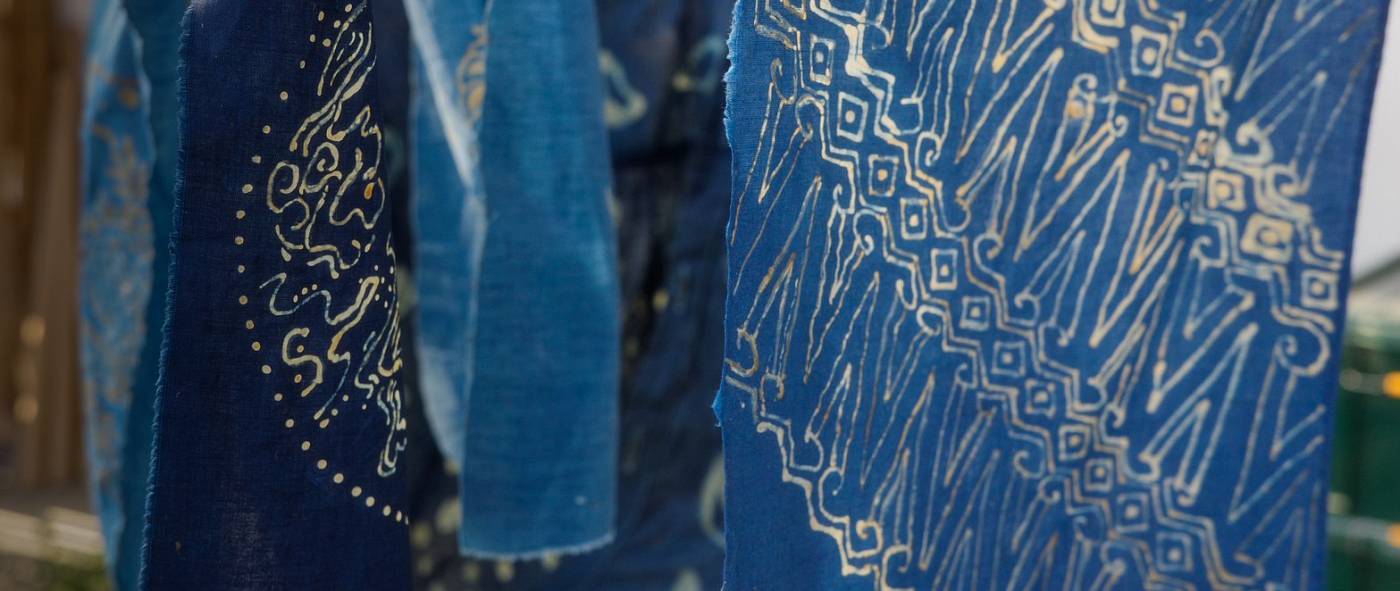
Binding and Unbinding the Enemy
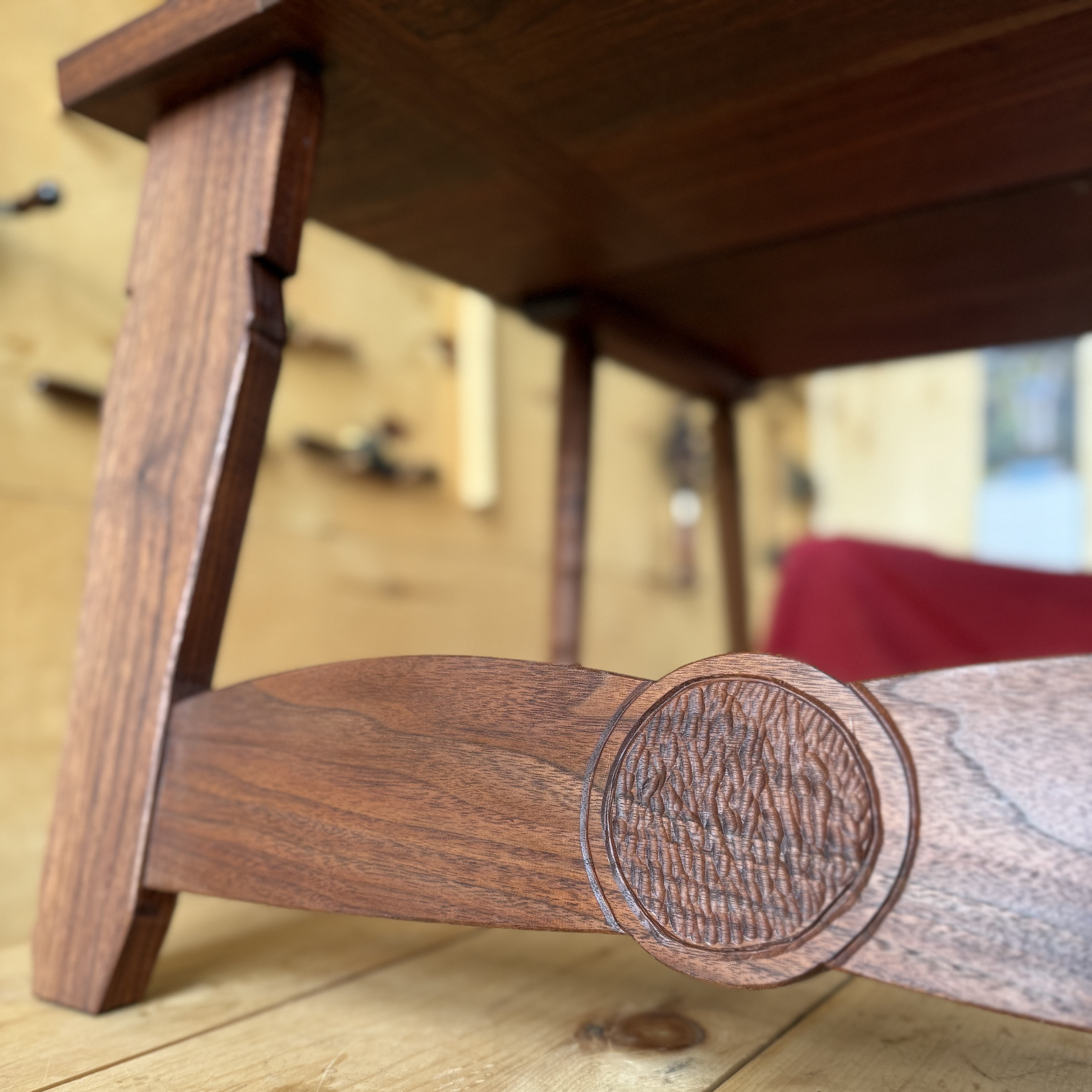
What’s in a symbol? In this blog post, Resident Artisan Gabe Strand writes about carving—and then removing—a motif from a bench he made, exploring the role of symbols in culture, craft, and life.
This past spring, I designed and built a piece of furniture in my Grand Marais woodworking studio. At first appearing to be a minimalist bench, the seat hinges and its backrest becomes two more legs when the bench is unfolded to make a low table. It was inspired by benches I encountered in Sweden, and it fits into my interest for designing multi-purpose, modern furniture with traditional roots. The form itself relies on staked joinery, which is a type of woodworking I teach, and building the bench requires a combination of chairmaking and cabinetmaking skills, making it a fun challenge.
I built my bench using some air-dried black walnut I brought with me to Grand Marais. I wanted to practice my carving skills and began looking for designs to carve onto the bench’s crest. I considered floral motifs, but wanted something related to the bench’s Scandinavian origins. I found a couple of patterns in Karvsnitt, Jogge Sundqvist’s book on carving, a reference I often use for ideas and skill-building exercises. I decided to carve one pattern on the front of the bench, and a second pattern on the back, which would be seen when the bench was unfolded. I carved a triquetra on the front of the crest. This is a pattern of three interlocking arcs, and is associated with Celtic knotwork, although it also appears in Persian and Buddhist iconography. I didn’t want a complicated design, and I could carve this pattern using only a small v-tool and a knife.
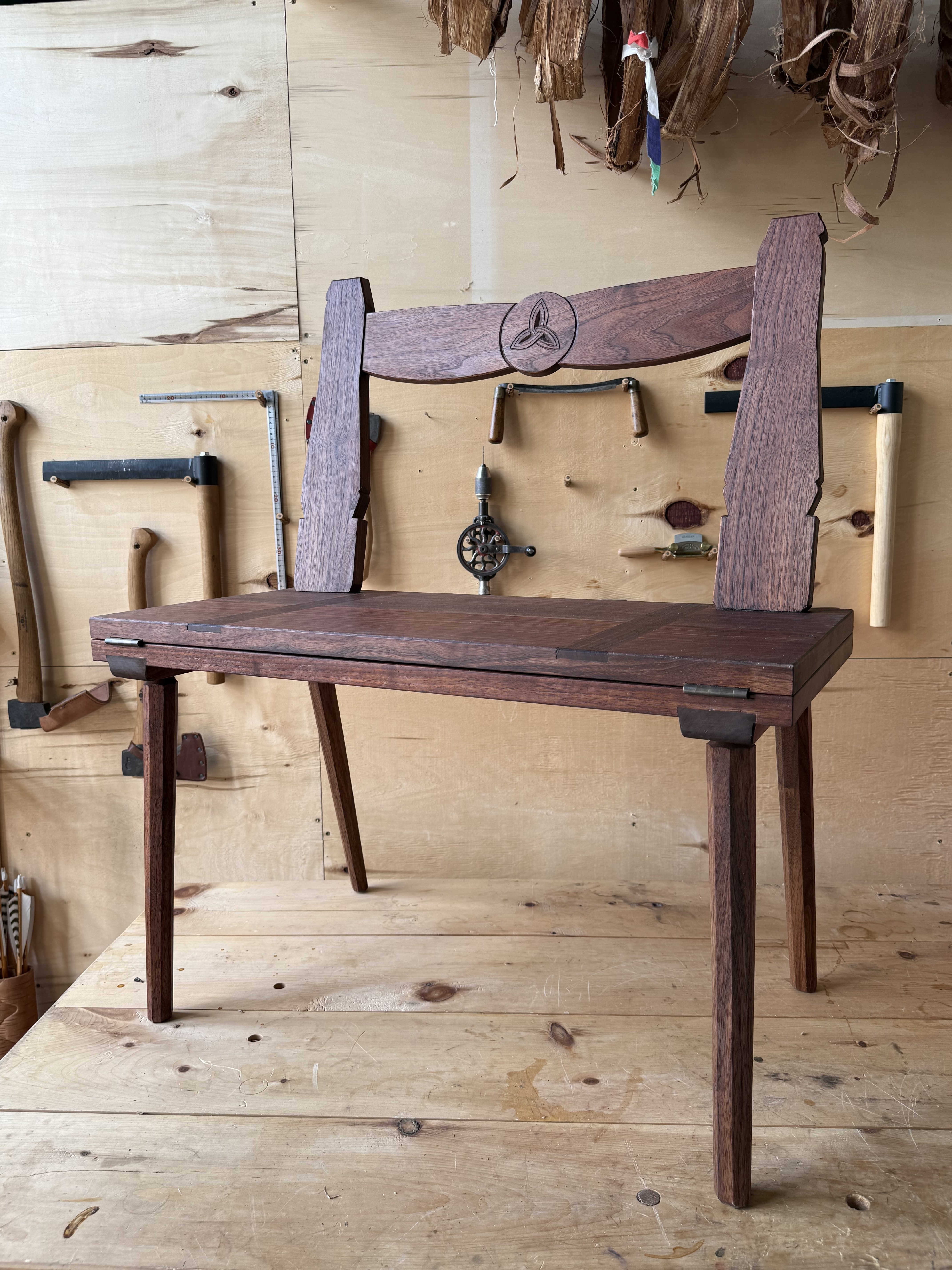
For the back of the crest, I chose a second pattern from Karvsnitt, and this is where things got interesting. Sundqvist lists this pattern as “Odin’s Valknut,” a geometric pattern featuring three interlocking triangles. In this grouping of three interlocking elements, it had some connection to the first carving. It also can be carved using just a v-tool. The valknut has strong ties to Norse mythology, but has a minimalist, angular look that fits in with the bench as I had designed it. I carved the pattern, finished the bench with my typical hand-rubbed linseed oil and beeswax, and, calling it “done,” proceeded to sweep up the shop.
When I showed it to a friend a couple of weeks later, they looked gravely concerned. They told me that this pattern of three interlocking triangles had been recently associated with white supremacists, including most famously the so-called “QAnon Shaman” Jacob Chanley, notorious for his role in the US Capitol riot on Jan 6, 2021 (remember the guy with Viking horns?) I was planning to show this piece at two upcoming craft fairs, and was deeply disappointed that I had chosen a pattern that some might associate with alt-right ideology. I had not researched the (mis)interpretations and (mis)uses of this ancient symbol before committing to carving it. My brain resisted the thought of risky work ahead: carving through the finished piece, possibly damaging the bench or creating a cascade of design issues that would need solving, just because a few neo-Nazis had appropriated a sacred symbol of Norse culture for their own twisted ideology. As the saying goes, I “decided to do my own research” before proceeding.
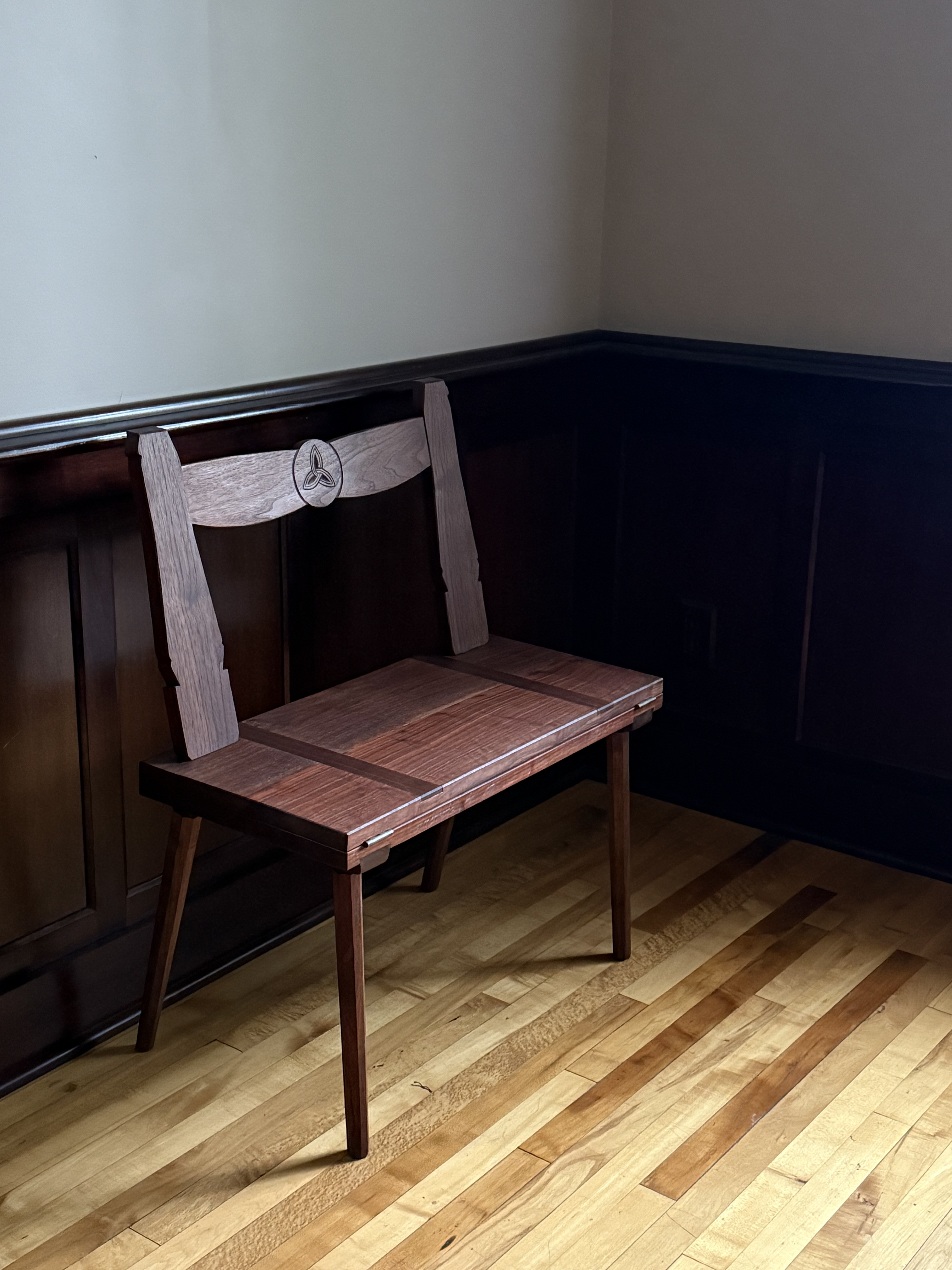
I wanted to know the origins of this symbol, what scholars think it might have meant in the past, and why it had been co-opted to represent a political ideology in the 21st century. Online commentators rely on interpretations and theories by the English folklorist Hilda Ellis Davidson in her books Pagan Scandinavia (1967) and Gods and Myths of Northern Europe (1990) to speculate on the first two of these questions.
Odin is the supreme god and a powerful figure in the realms of war and death in Norse mythology. The three interlocking triangles forming the valknut are found on relics from the Viking age, including stone carvings and burial shrouds from the 7th century. One of the most famous of these is the Stora Hammars Stone in Gotland, Sweden, where the valknut is possibly representing a warrior's soul being transported to heaven by a huge bird. The valknut is related to Odin through his connection to war and death. “Val” means warrior (as in Valhalla) and “knut” can mean knot or heart. These translations, and the icon’s inclusion in ceremonial and spiritual contexts, have led to various interpretations of the symbol as a sign of Odin’s power to “bind and unbind”. If translated as “warrior’s knot,” it references Odin’s power to bind his enemies using a form of magic called Seidr, ensuring victory through mental trickery and confusion. If interpreted as “warrior’s heart,” the valknut becomes a symbol of Odin’s ability to inspire his own warriors to sacrifice themselves for the reward of a hero’s death. Or so says The Internet.1
Of course, the cultural context and symbolic importance of three interconnected triangles in Norse cosmology and art are shrouded in mystery, as there are no first-hand accounts available to clear things up. This is the case for many ancient symbols, and authoritarian regimes promoting hateful ideologies have a bad track record of recruiting runic and other Northern European symbols for their own modern purposes. While Odin’s valknut may have had rich associations with ancient European understandings of the Afterlife, qualities of bravery and valor, and interconnectedness of the human and spiritual realm, the Anti-Defamation League now includes it in a list of “general symbols of hate.”2 Once co-opted as an easily tattooed symbol of white supremacy, is there a possibility of redemption for an icon with such a rich symbolic heritage?
After considering the facts, I was able to face a couple of realities. First, I wasn’t personally connected to the symbol. Despite my Norwegian heritage, Odin is not a god I wake up thinking about, and (thankfully) my furniture doesn’t have a strong connection to Norse conceptions of the Afterlife. Second, the design itself could be replaced with a little creativity and skill on my part. I spent an hour carving away the valknut and leaving a simple gouge texture in its place.
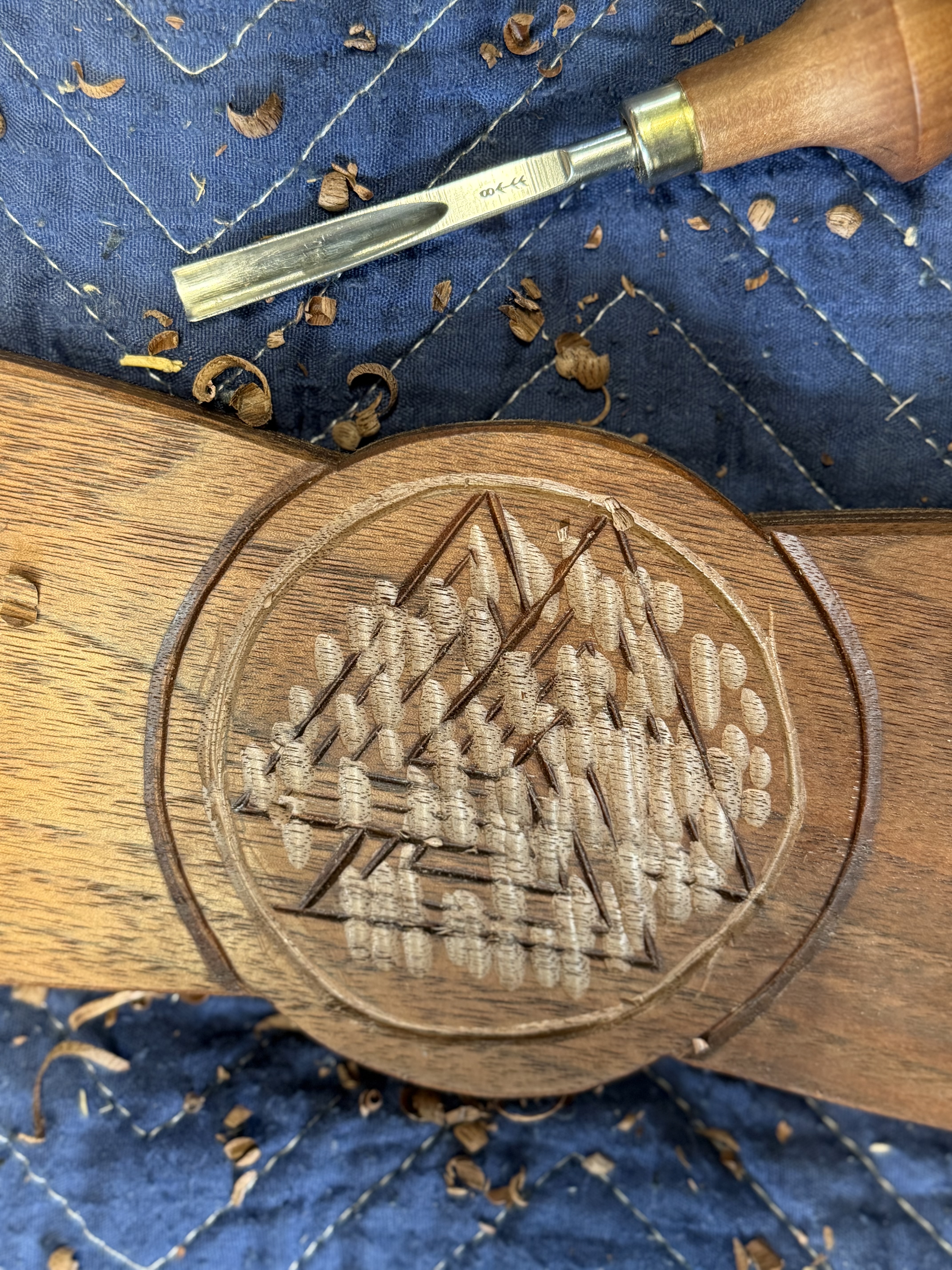
Still, I kept thinking about symbols and how we use them, how rich with possibility they are. How they have been used to inspire and control, to bind and unbind hearts and minds in countless ways throughout history. We live in a time when symbols and words are co-opted and re-defined on a daily basis, twisted into service for one ideology, repackaged for a more narrow interpretation.
Maybe we live in an era where symbols gain personal meaning as they come into our lives, helping us navigate a world that is more and more fragmented and lonely. If it resonates with me at all, the valknut visually represents interconnectedness and intersectionality: the power of binding people and movements together in recognition of their common cause against a shared enemy. The maze-like design of intertwining, overlapping lines evokes the strength of interwoven fabric, of dispersed paths becoming linked and organized.
The power of Odin’s valknut to “bind and unbind” the minds of adversaries and oppressors in battle has a poignant attraction these days, as the growing grassroots movement against facism in the United States finds itself facing new existential threats daily. To feel your very existence is under threat induces fear, naturally. Creating conditions that induce fear, uncertainty, and instability is a foundational tactic of fascist regimes, a form of political violence akin to Odin’s mastery of Seidr, imposing coercive control over enemies and supporters alike.
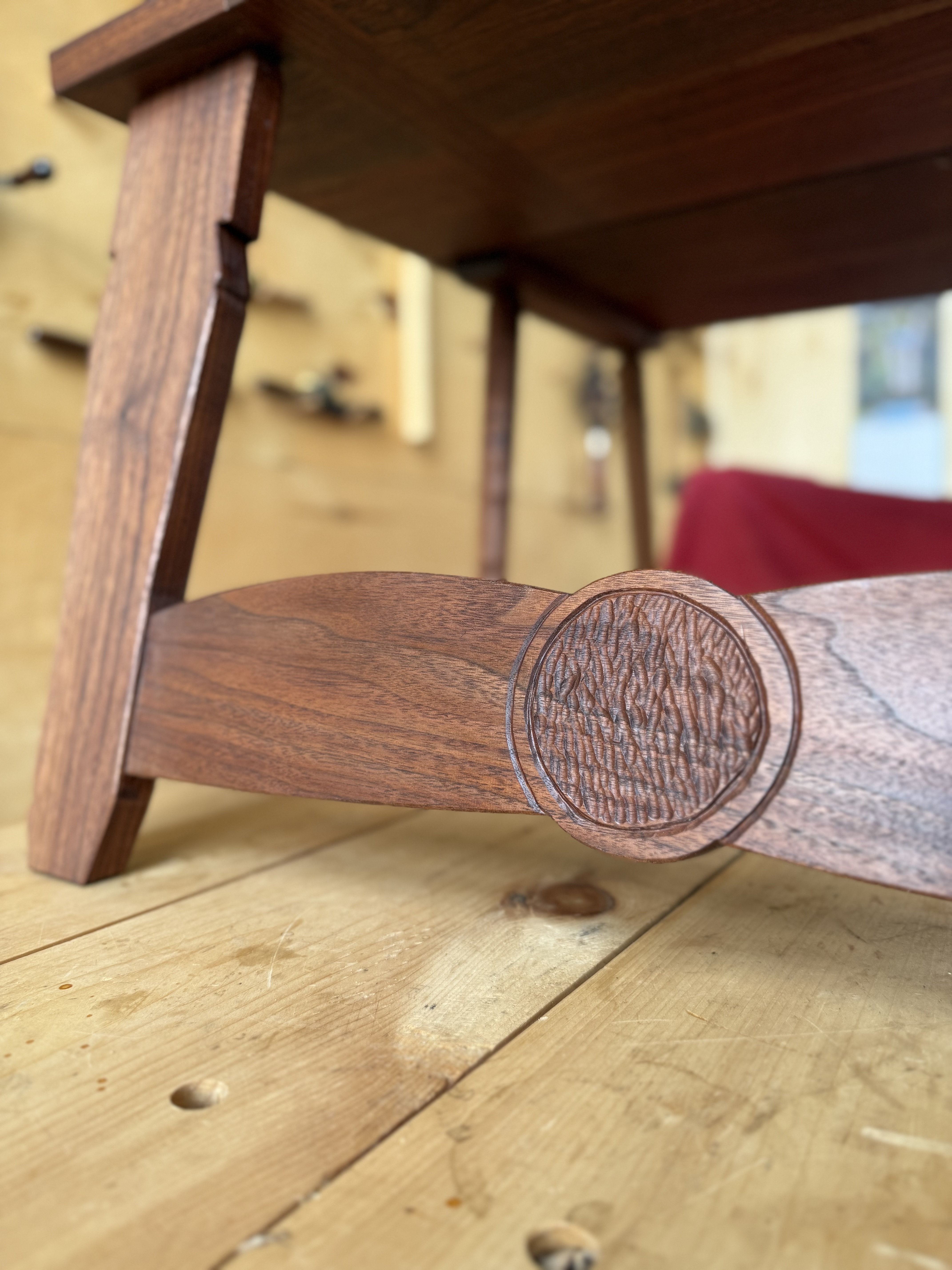
But a symbol that can represent both binding and unbinding can help those of us fighting fascism orient our response to fear, just as it did for Odin’s warriors, on real or imagined battlefields. Could it be that Odin’s power to unbind helped inspire the idea in our culture that courage is not the absence of fear, it is a response to fear? Odin’s power to unbind his followers from fear and confusion while binding them together with resolution of sight and clarity of purpose is an image that serves the current struggle against erasure and oppression here and around the world.
Fascists tend to co-opt abstract symbols representing power because their own rhetoric can’t mask the weaknesses in their political ideology. Simple symbols are necessary for them to draw their ranks together, allowing followers to focus on something clear even while their actions may be hypocritical and conflicting. Even if recapturing a symbol like the Valknut for anti-fascism may help re-orient our focus, I’m glad I carved it off my bench without (too much) hesitation. Ultimately, it felt better to take action than to be bound by a symbol.
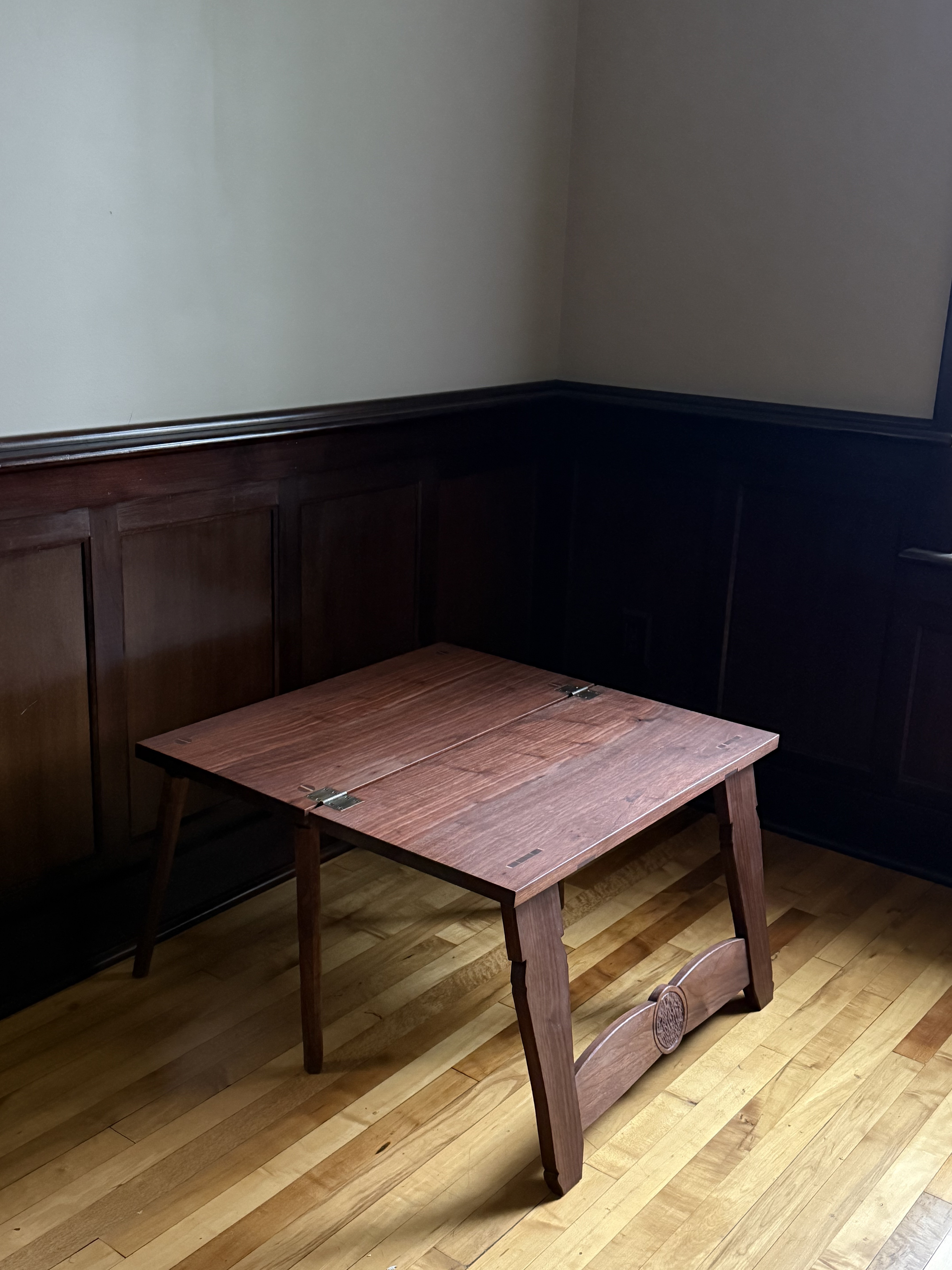
Gabe Strand is a furniture maker, educator, and writer. He builds chairs and furniture on commission. For inquiries, please contact Gabe at gabedstrand@gmail.com
1 The above was summarized after reading the following websites:
https://odins-hall.us/blogs/symboles/valknut-signification-et-origine
https://berloga-workshop.com/blog/28-valknut-the-norse-mystery.html